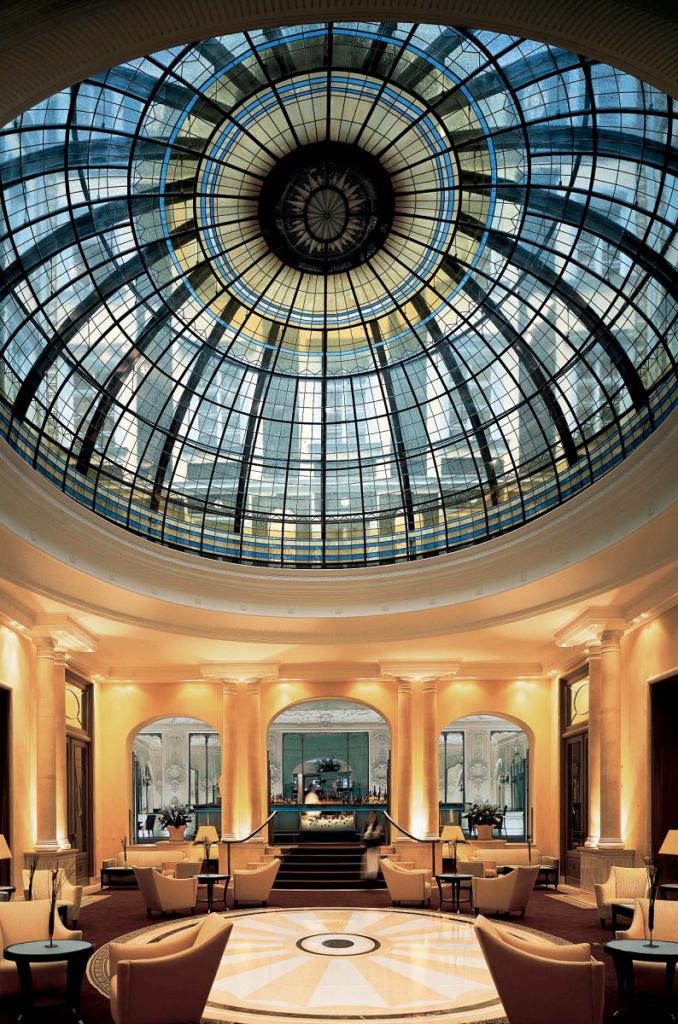While choosing popular cities to travel, the obvious choices are always Rome, Berlin, Barcelona and London, but how about those ‘alternative’ cities you may have never thought of or come across? That is where Munich, Germany comes in.
Nestled in the heart of Munich, Hotel Bayerischer Hof is one of Germany’s most historically important hotels, renowned for its timeless elegance and world-renowned design partnerships.
The aura of royalty is imminent as soon as one steps foot into the hotel. The property’s renowned collaboration with Belgian designer Axel Vervoordt, a global tastemaker, is designed with full picturesque and captivating minimalist interiors.
The unveiling of the art dealer, curator, designer, and antiquary Vervoordt’s latest revamp has transformed a section of the hotel into an artistic wonder– harmoniously mixing old and new, creating a design aesthetic that is hugely influential in Germany. He counts royalty within his clientele, with a nod to celebrities like Kanye West, Robert De Niro, and Calvin Klein.

Vervoordt’s collaboration with Hotel Bayerischer Hof is nothing short of incredible.
The Penthouse Garden Suite, Atelier, Garden restaurant, Cinema Lounge, and Palaishalle all bear the designer’s characteristic artistic touch. The new wing embodies a captivating minimalist design that is both modern and timeless in the same beat. Vervoordt’s talent helps the property keep in step with the ever-changing expectations of the hotel industry and attracts discerning guests who appreciate design that cleverly combines the present and the past.
Founded by female entrepreneur and owner Innegrit Volkhardt, who is dubbed “one of the most renowned hoteliers in the world,” her family has owned the Hotel Bayerischer Hof for over four generations, so the blood runs deep. The hotel recently celebrated 125 years of ownership. Volkhardt, a true Bavarian local, has immaculately maintained the hotel’s legacy while successfully integrating new design collaborations like that of Vervoordt.

Tucked away within the elegant shopping district, the hotel is near the city’s must-see attractions, including the Marienplatz, Viktualienmarkt, and the Hofbrauhaus, a fun and traditional beer house with live music (apparently it’s where the Nazis used to meet).
One can even say that you don’t need to leave the hotel, with a full service spa, a tiki bar underground, a glorious dome-shaped bar and networking area, a ballroom, and best of all, dinner at The Garden. The restaurant offers fan favorites like a goat cheese, fig and cottage cheese salad, as well as filet mignon with a side of spinach and potatoes. A sweet finish with a trio of sorbets to cleanse the palate and keep it light.

Hotel Bayerischer Hof boasts over 300 luxurious rooms and suites that capture its deep history, blending luxury with design.

The collaborative designs of Axel Vervoordt have played an immensely significant role in helping the hotel innovate and evolve without losing the essence that has made it a Bavarian favorite for 125 years. If you’re looking to indulge in an unforgettable experience, Hotel Bayerischer Hof is undoubtedly one of the best options in Munich. For The Silo, Ellie Ross.


